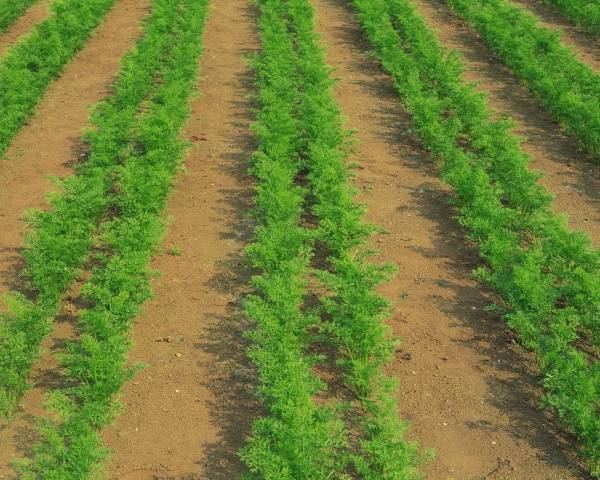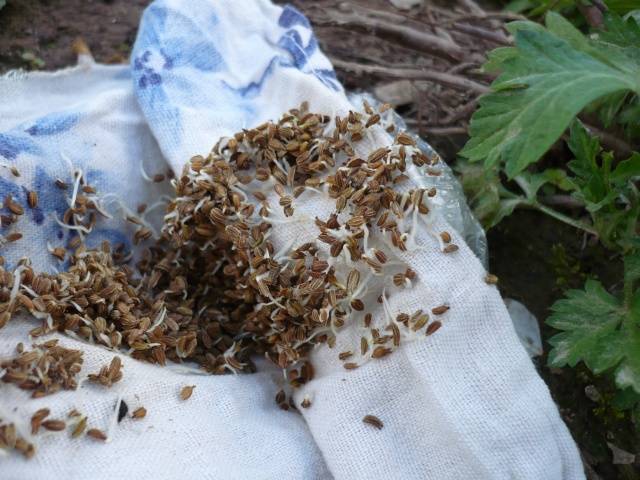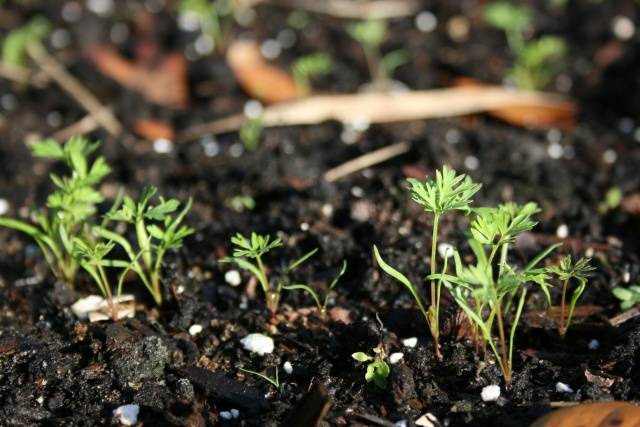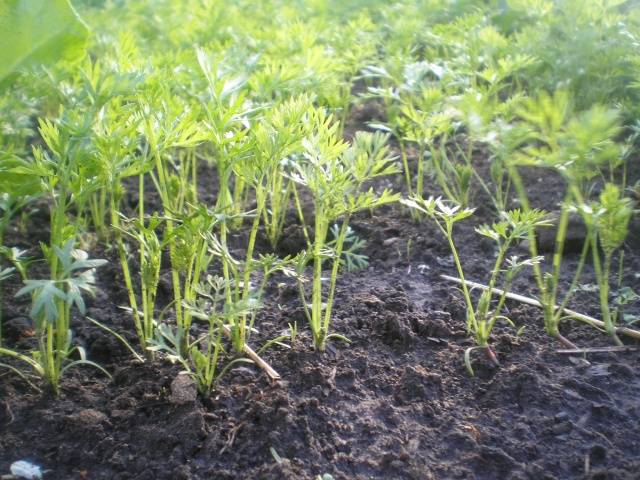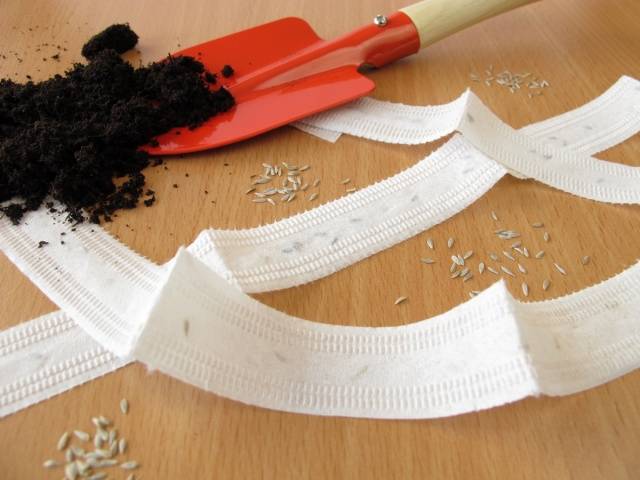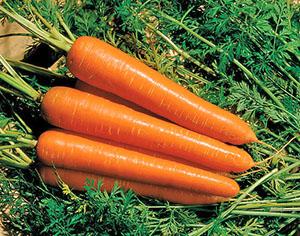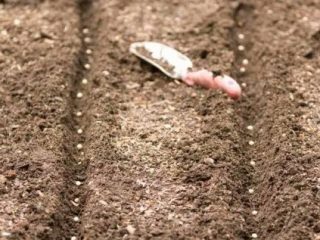Content
Carrots are on the list of crops required for growing in garden plots. This vegetable requires minimal seed and soil preparation. To ensure good germination of seeds, you need to choose the right place and timing for planting. When sow carrots, depends on climate and weather conditions.
The time chosen for planting affects the harvest. Sowing is done in spring or summer. It is allowed to carry out planting work in the fall when frost occurs.
Choosing a landing site
Carrots prefer sunny places where there is no darkness. With a lack of lighting, the growth of the crop slows down and its taste deteriorates. The bed should be illuminated by the sun all day.
Plant carrots You can go to the area where legumes, herbs, cabbage, tomatoes or cucumbers previously grew. Every year the planting location of this vegetable changes. You can plant onions next to carrots to protect the plants from pests.
Soil preparation
Before choosing the time to plant carrots in open ground, you need to prepare the ground. Carrots prefer fertile soil rich in nutrients. This crop is grown everywhere, but if the soil is not prepared correctly, the harvest will be meager.
Excess fertilizer leads to changes in the shape of carrots and impairs their taste. It is not recommended to use manure and compost on the garden bed. Upon landing What matters is the mechanical composition of the soil, which must first be dug up and loosened. Peat or sawdust is added to the soil.
In the autumn, the ground is dug up, stones are removed from it, weeds and other particulate matter. It is permissible to use fertilizer based on phosphate or potassium. If the soil is peaty, then sand is added. Humus and peat will help improve the properties of clay soil. Chernozem does not require special preparation; it is enough to add sand immediately before planting.
Seed preparation
Carrot seeds can be stored for several years and germinate well. To ensure rapid germination, the seeds are pre-treated. The following methods are considered the most effective:
- Use of special stimulants. The procedure is indicated in the instructions for the drug. The process takes up to 20 hours and guarantees high seed germination.
- Placing seeds in soil. A long-known method in which the seeds were wrapped in cloth and then buried in the ground to a shallow depth. After 10 days, the fabric was taken out and the sprouts were planted in the garden bed.
- Soaking seed material. To do this, you will need cotton wool or a piece of cloth where the seeds are placed. A day later, planting work begins.
- Boiling water treatment. The seeds are placed in a cloth and immersed in hot water for 20 minutes. Then the contents must be cooled with cold water.
Planting methods
The following methods describe how to properly plant carrots in open ground:
- in bulk, when seed material is scattered over the garden bed;
- in rows maintaining a distance of up to 10 cm;
- furrows in narrow beds.
The first method is to plant carrots in spring and summer. As a result, the seedlings will be uneven and difficulties will arise with weeding. If you use this method for early planting, you need to take measures to control weeds. Otherwise, the weeds will not allow the carrots to grow normally.
When planting in rows in autumn, seeds are often washed out of the soil by meltwater. This method will not work if the region has a rainy spring or summer. Furrow sowing is used regardless of the time of year.
Early boarding
If you need to get a carrot harvest as soon as possible, then planting begins in early spring. This is a moisture-loving plant, so you can start working immediately after the snow melts.
When to plant carrots depends on the soil and air temperature. The plant is resistant to frost and low temperatures. You can start planting after the soil has warmed to +5°C. The air temperature should reach +15°C. The third ten days of April are suitable for this.
If you plant seeds earlier, they will take longer to germinate. To form a root crop, an air temperature of up to +20°C is required.
It is enough to loosen the prepared beds. If the soil was not dug up in the fall, then this is done in the spring.
You need to plant carrots in the spring following the sequence of steps:
- Furrows are made to a depth of 5 cm. Leave 15-20 cm between rows.
- The resulting depressions are sprinkled with peat, humus or sand, and then watered.
- Carrots are sown along the furrow, covered with soil and lightly compacted.
- Sand or peat is poured on top.
To speed up seed germination, the bed is covered with film. After the first shoots appear, the covering material is removed.
Late boarding
If you have not yet decided when to plant carrots in 2018, then you can postpone the procedure until the summer. Sowing at a later date will allow you to get a harvest in August-September. The period from the beginning of May is suitable for this. Work is allowed to be carried out until the end of July.
Late planting of carrots has the following advantages:
- the ability to disembark after major work in the spring;
- by autumn, the crop retains its taste, does not overgrow, does not crack;
- planting is done in warm soil, which ensures good germination;
- no frost protection required;
- the storage time of the crop increases.
Late planting includes the following steps:
- The soil is dug up and weeds are eliminated.
- The bed is divided into furrows up to 5 cm deep.
- Peat, humus or other fertilizer is poured into the bottom of the depressions.
- Sow carrots in furrows.
- The planting site is sprinkled with earth and peat.
Planting in winter
When to sow carrots to get an early harvest? In this case, planting is carried out in winter. For this purpose, site preparation begins in September. A place protected from the winds is pre-selected. To avoid flooding the bed with melt water, it must be located on a hill.
The procedure for planting carrots in the fall is as follows:
- The surface of the bed is cleared of weeds and plant debris.
- The soil is dug up and organic and complex fertilizers are added to it.
- After the first frost, the soil is leveled and depressions of 5 cm are made in it.
- Peat or sand is placed at the bottom of the hole.
- At an air temperature of 5°C, we sow carrots.
- A layer of humus or peat is applied to the planting.
- When the bed is covered with snow, it is covered with spruce branches. After the thaw, the snow cover will remain underneath.
Carrots planted in winter germinate a couple of weeks earlier than those sown in early spring. Its seeds are hardened in winter conditions, so the seedlings are resistant to frost. In spring, due to the abundant exposure to moisture, the root system of carrots is strengthened.
Caring for carrots
To grow a good harvest, you need to provide the plants with the necessary care. This includes watering, loosening, weeding and fertilizing. The harvest begins in three months.
Immediately after planting, the seeds require watering. Then the soil is moistened progressively. The most intensive watering occurs in July. Since August, plantings have been watered less and less.
Watering is done in the evening with warm water. On average, seedlings need to be watered every 10 days, taking into account precipitation.
As the carrots grow, they are weeded. Not only weeds are removed from the soil, but also too dense shoots. Loosening of the soil will be carried out between the rows to a depth of 5 cm.
After the first leaves appear, carrots can be fed with nitrogen fertilizer. Up to 15 g of urea is required per square meter of planting. Plants respond well to phosphorus and potassium fertilizers.
Let's sum it up
The timing of planting carrots is determined taking into account weather conditions. If it is too late to carry out early sowing, then this year it is possible to carry out the work in late spring.Summer planting significantly relieves the intense spring harvest. Sowing in winter will allow you to get an early harvest for next year. The yield of carrots largely depends on the soil and the place chosen for planting.

